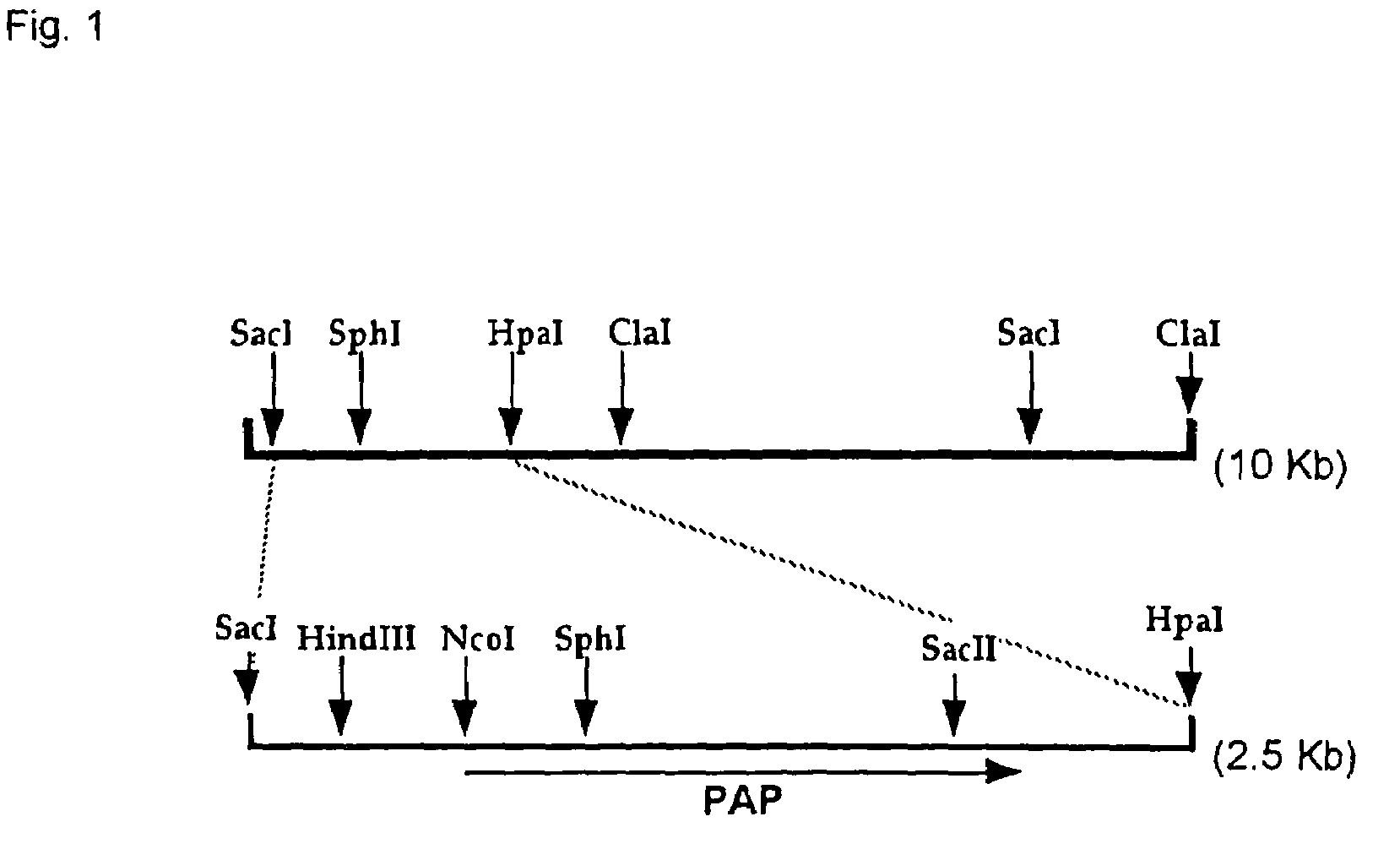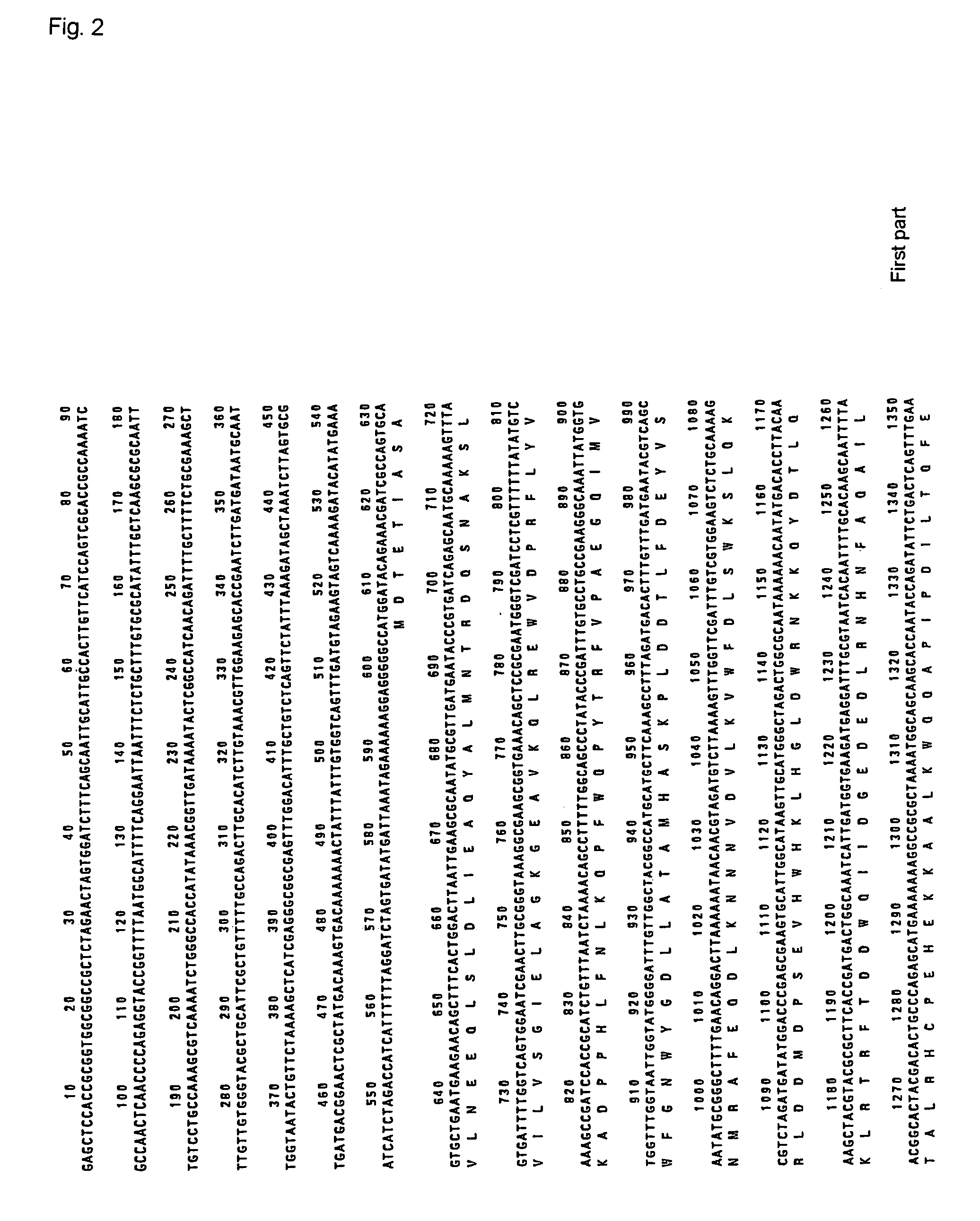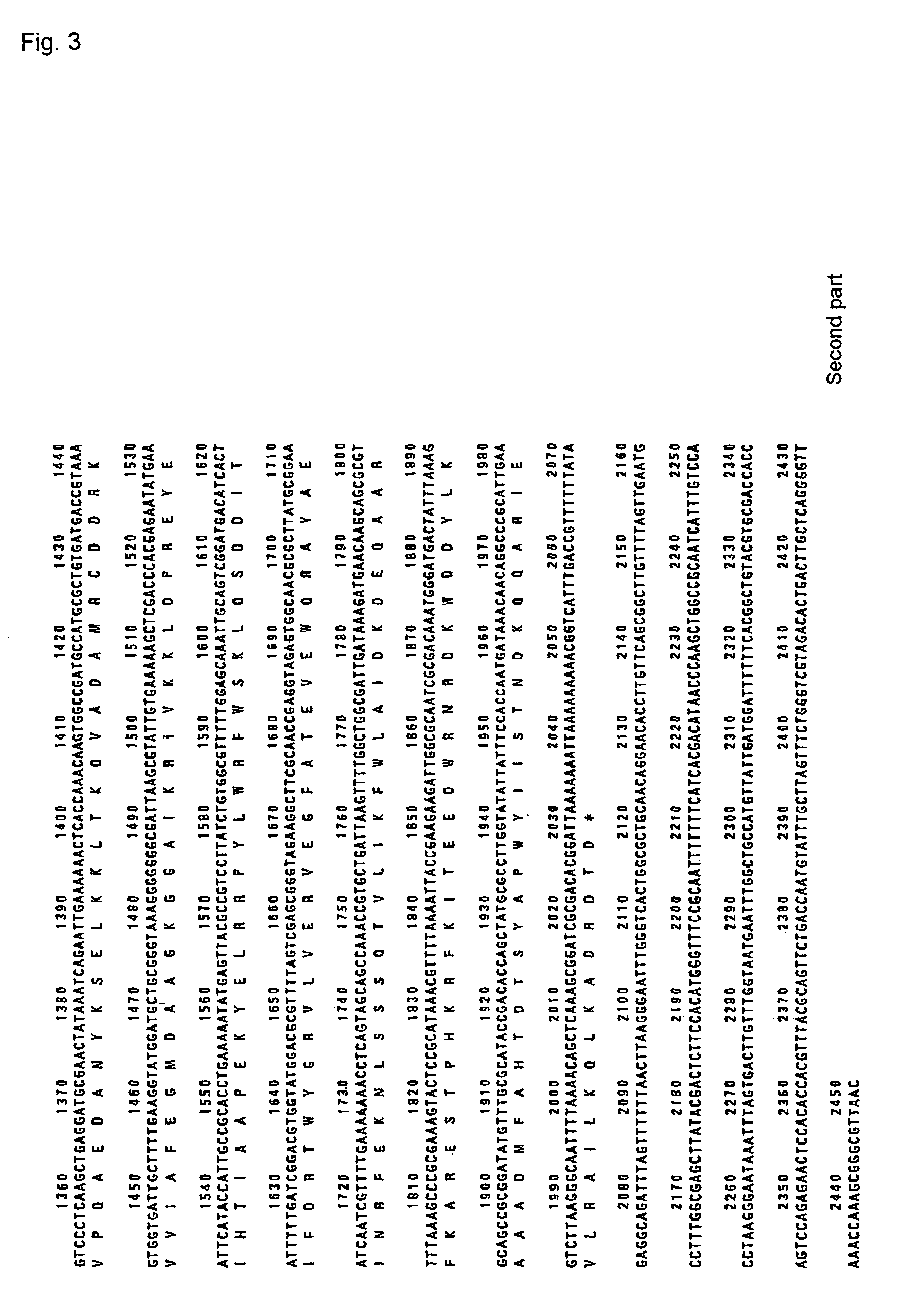Polyphosphate:AMP phosphotransferase
a phosphotransferase and polyphosphate technology, applied in the field of new products, can solve the problems of complex separation and purification of the target nucleoside diphosphate from the reaction solution, and the synthesis of the product has been far from easy, and achieves the effect of efficient atp generation/regeneration system and high specific activity
- Summary
- Abstract
- Description
- Claims
- Application Information
AI Technical Summary
Benefits of technology
Problems solved by technology
Method used
Image
Examples
example 1
Preparation of the PAP of the Present Invention
(1) Cloning of the PAP gene of Acinetobacter johnsonii Strain 210
(1-1) E. coli Polyphosphate Kinase and Isotope-labeled Polyphosphate
[0080]E. coli polyphosphate kinase was prepared by the method described in the document (J. Biol. Chem., 268, 633-639(1993)). Isotope-labeled polyphosphate was prepared using the thus prepared E. coli polyphosphate kinase according to the method of Akiyama et al. (J. Biosci. Bioeng., 91, 557-563(2001)).
(1-2) Production of Genomic Library of Acinetobacter johnsonii and its Screening
[0081]Acinetobacter johnsonii strain 210A was inoculated in LB medium, and the cultivated overnight at 30° C. with stirring. The cells were collected by centrifugation, and chromosomal DNA was purified. The chromosomal DNA of Acinetobacter johnsonii was partially decomposed with restriction enzyme Sau3AI, and the fragments were fractionated by sucrose density gradient centrifugation to recover the fraction of about 7 to 10 Kb. Th...
example 2
Synthesis of ATP Using PAP and Adenylate Kinase
(1) Preparation of E. coli Adenylate Kinase
[0098]E. coli adenylate kinase was prepared by the procedure described in the document (Proc. Natl. Acad. Sci. USA, 97, 14168-14171 (2000)). However, the cell extract produced by ultrasonication was used for the enzyme solution, and the specific activity of the adenylate kinase in the enzyme solution was 12.5 units / mg protein.
(2) Synthesis of ATP
[0099]To 50 mM Tris HCl buffer solution (pH 7.8) containing 20 mM MgCl2, polyphosphate (30 mM calculated in terms of inorganic phosphate), and 10 mM AMP were added 1.5 units / ml of PAP and 0.4 unit / ml of adenylate kinase, and the solution was incubated at 37° C. for 60 minutes. After the completion of the reaction, amount of the nucleotide in the reaction solution was measured by HPLC.
[0100]As shown in FIG. 8, it was confirmed that AMP is promptly phosphorylated by the PAP to produce ADP, and the thus produced ADP is promptly converted to ATP and AMP by ...
example 3
Synthesis of Galactose-1-phosphate Using ATP Regeneration System Comprising the combination of PAP and Adenylate Kinase
(1) Preparation of E. coli Galactokinase
[0101]E. coli strain JM109 having the plasmid pDR540 containing E. coli galactokinase gene (Gene, 20, 231(1982), obtained from Pharmacia) was inoculated in 2xYT medium containing 100 μg / ml ampicillin, and the E. coli was cultivated at 37° C. with shaking. When the cell density reached 4×108 / ml, IPTG was added to the culture medium to a final concentration of 1 mM, and the incubation was continued at 30° C. for another 5 hours. After completion of the cultivation, the cells were collected by centrifugation and suspended in 30 ml buffer solution (50 mM Tris HCl (pH 7.8), 1 mM EDTA). The cells were lyzed by ultrasonication, and bacterial residue was removed by further centrifugation. The solution collected was subjected to ion exchange chromatography using DEAE Toyopearl 650M (Toso) (eluent: 50 mM Tris HCl (pH 7.8), concentration...
PUM
| Property | Measurement | Unit |
|---|---|---|
| temperature | aaaaa | aaaaa |
| temperature | aaaaa | aaaaa |
| pH | aaaaa | aaaaa |
Abstract
Description
Claims
Application Information
 Login to View More
Login to View More - R&D
- Intellectual Property
- Life Sciences
- Materials
- Tech Scout
- Unparalleled Data Quality
- Higher Quality Content
- 60% Fewer Hallucinations
Browse by: Latest US Patents, China's latest patents, Technical Efficacy Thesaurus, Application Domain, Technology Topic, Popular Technical Reports.
© 2025 PatSnap. All rights reserved.Legal|Privacy policy|Modern Slavery Act Transparency Statement|Sitemap|About US| Contact US: help@patsnap.com



